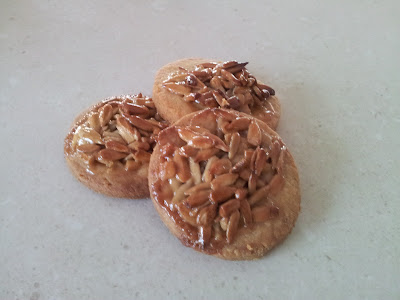Homemade Tim Tams
First, a disclaimer...
I have listed white flour & cornflour in the biscuit recipe to try and get them close to the actual biscuits. To improve the nutrition, you could add some wholemeal flour, or even better, use spelt flour. White spelt flour is much more nutritious than white wheat flour and much easier to digest. You could also add a small amount of chia seeds or other ground up seed to improve the nutrition. I will be working on a healthier biscuit, but in the meantime, these are really tasty and are a much better option than store bought. And you can control the amount of sugar/ganache/chocolate to your personal tastes.
For reference, these are the ingredients in store bought Tim Tams:
Milk chocolate (38%)(sugar, milk solids, cocoa butter, cocoa mass, emulsifiers (e322: soy, e476), flavouring), wheat flour, sugar, vegetable oil, golden syrup, colours (e102, e110, e129, e133, e150), milk solids, cocoa, salt, raising agent(e500), emulsifier (e322: soy) and flavouring. May contain traces of peanut, other nut, egg or seed.
Ingredients:
2 1/4 cups plain flour or spelt flour
1/4 cup cornflour
5 teaspoons cacao or cocoa powder
1/2 teaspoon sea salt
1 cup raw sugar
1/2 cup butter, softened
1/3 cup milk
1 teaspoon pure vanilla extract or paste
75ml pure cream
50g dark chocolate, chopped
50g milk chocolate, chopped
190g dark or milk chocolate, chopped
Biscuit
1. In a small bowl, combine the first 4 ingredients.
2. Beat butter and sugar until creamy, add milk and vanilla and mix on low speed (mixture will look curdled)
3. Add flour mixture and stir until combined.
3. Shape into a rectangular log, wrap in baking paper and refridgerate for at least 1 hour until really firm.
4. Using a sharp knife, cut 5mm slices and place onto baking tray. Bake in the oven at 190 degrees for 10-12 minutes until edges are very firm. Allow to cool completely on wire rack.
Filling
1. Combine cream and chocolate in a pan over low heat until chocolate has melted (or use microwave). Be very careful not to overcook - remove from the heat before the chocolate has melted, residual heat will finish melting the chocolate.
2. Place in fridge and allow to firm.
3. Remove from fridge and whisk until creamy.
Coating
Melt chocolate in double boiler or microwave until smooth.
Construction
1. Spread a little filling onto cold biscuit, top with another biscuit.
2. Place in fridge and allow to set.
3. Dip biscuit into melted chocolate, using a fork to turn and then pick up and place onto baking paper. Allow to set in fridge until chocolate is hard. Enjoy!!
*The biscuits on their own also make a good treat for kids, especially if you sneak a few healthy things in. They are crunchy biscuits so they can't inhale them like chewier ones ;)








